<=10mm
>20mm
11mm—20mm
Plastic
Metal
Electrosurgical Devices
Enteral Devices
Analyzers and Processing Equipment
Diagnostic Imaging Devices
Cardiology Devices
Dental Instruments
Embedded Electronics Connectors
Circular Connector and Receptacle Systems
Lighted Hospital Grade Cords
Flat silicone Surgical Cables
Disposable Electronics Connectors
Magnetic Medical Connectors
Radio Frequency Connectors
Hospitals & Clinics
Imaging Centres and Diagnostic Laboratories
Ambulatory Surgical Centres
North America Medical Connector by Connector Size<=10mm
>20mm
11mm—20mm
North America Medical Connector by MaterialPlastic
Metal
North America Medical Connector by ApplicationElectrosurgical Devices
Enteral Devices
Analyzers And Processing Equipment
Diagnostic Imaging Devices
Cardiology Devices
Dental Instruments
North America Medical Connector by ProductEmbedded Electronics Connectors
Circular Connector and Receptacle Systems
Lighted Hospital Grade Cords
Flat silicone Surgical Cables
Disposable Electronics Connectors
Magnetic Medical Connectors
Radio Frequency Connectors
North America Medical Connector by End-UserHospitals & Clinics
Imaging Centres and Diagnostic Laboratories
Ambulatory Surgical Centres
US Medical Connector by Connector Size<=10mm
>20mm
11mm—20mm
US Medical Connector by MaterialPlastic
Metal
US Medical Connector by ApplicationElectrosurgical Devices
Enteral Devices
Analyzers And Processing Equipment
Diagnostic Imaging Devices
Cardiology Devices
Dental Instruments
US Medical Connector by ProductEmbedded Electronics Connectors
Circular Connector and Receptacle Systems
Lighted Hospital Grade Cords
Flat silicone Surgical Cables
Disposable Electronics Connectors
Magnetic Medical Connectors
Radio Frequency Connectors
US Medical Connector by End-UserHospitals & Clinics
Imaging Centres and Diagnostic Laboratories
Ambulatory Surgical Centres
CANADA Medical Connector by Connector Size<=10mm
>20mm
11mm—20mm
CANADA Medical Connector by MaterialPlastic
Metal
CANADA Medical Connector by ApplicationELECTROSURGICAL DEVICES
Enteral Devices
Analyzers And Processing Equipment
Diagnostic Imaging Devices
Cardiology Devices
Dental Instruments
CANADA Medical Connector by ProductEmbedded Electronics Connectors
Circular Connector and Receptacle Systems
Lighted Hospital Grade Cords
Flat silicone Surgical Cables
Disposable Electronics Connectors
Magnetic Medical Connectors
Radio Frequency Connectors
CANADA Medical Connector by End-UserHospitals & Clinics
Imaging Centres and Diagnostic Laboratories
Ambulatory Surgical Centres
Europe Medical Connector by Connector Size<=10mm
>20mm
11mm—20mm
Europe Medical Connector by MaterialPlastic
Metal
Europe Medical Connector by ApplicationElectrosurgical Devices
Enteral Devices
Analyzers And Processing Equipment
Diagnostic Imaging Devices
Cardiology Devices
Dental Instruments
Europe Medical Connector by ProductEmbedded Electronics Connectors
Circular Connector and Receptacle Systems
Lighted Hospital Grade Cords
Flat silicone Surgical Cables
Disposable Electronics Connectors
Magnetic Medical Connectors
Radio Frequency Connectors
Europe Medical Connector by End-UserHospitals & Clinics
Imaging Centres and Diagnostic Laboratories
Ambulatory Surgical Centres
Germany Outlook (USD Billion, 2018-2032)
Germany Medical Connector by Connector Size<=10mm
>20mm
11mm—20mm
Germany Medical Connector by MaterialPlastic
Metal
Germany Medical Connector by ApplicationElectrosurgical Devices
Enteral Devices
Analyzers And Processing Equipment
Diagnostic Imaging Devices
Cardiology Devices
Dental Instruments
Germany Medical Connector by ProductEmbedded Electronics Connectors
Circular Connector and Receptacle Systems
Lighted Hospital Grade Cords
Flat silicone Surgical Cables
Disposable Electronics Connectors
Magnetic Medical Connectors
Radio Frequency Connectors
Germany Medical Connector by End-UserHospitals & Clinics
Imaging Centres and Diagnostic Laboratories
Ambulatory Surgical Centres
France Medical Connector by Connector Size<=10mm
>20mm
11mm—20mm
France Medical Connector by MaterialPlastic
Metal
France Medical Connector by ApplicationElectrosurgical Devices
Enteral Devices
Analyzers And Processing Equipment
Diagnostic Imaging Devices
Cardiology Devices
Dental Instruments
France Medical Connector by ProductEmbedded Electronics Connectors
Circular Connector and Receptacle Systems
Lighted Hospital Grade Cords
Flat silicone Surgical Cables
Disposable Electronics Connectors
Magnetic Medical Connectors
Radio Frequency Connectors
France Medical Connector by End-UserHospitals & Clinics
Imaging Centres and Diagnostic Laboratories
Ambulatory Surgical Centres
UK Medical Connector by Connector Size<=10mm
>20mm
11mm—20mm
UK Medical Connector by MaterialPlastic
Metal
UK Medical Connector by ApplicationElectrosurgical Devices
Enteral Devices
Analyzers And Processing Equipment
Diagnostic Imaging Devices
Cardiology Devices
Dental Instruments
UK Medical Connector by ProductEmbedded Electronics Connectors
Circular Connector and Receptacle Systems
Lighted Hospital Grade Cords
Flat silicone Surgical Cables
Disposable Electronics Connectors
Magnetic Medical Connectors
Radio Frequency Connectors
UK Medical Connector by End-UserHospitals & Clinics
Imaging Centres and Diagnostic Laboratories
Ambulatory Surgical Centres
ITALY Medical Connector by Connector Size<=10mm
>20mm
11mm—20mm
ITALY Medical Connector by MaterialPlastic
Metal
ITALY Medical Connector by ApplicationElectrosurgical Devices
Enteral Devices
Analyzers And Processing Equipment
Diagnostic Imaging Devices
Cardiology Devices
Dental Instruments
ITALY Medical Connector by ProductEmbedded Electronics Connectors
Circular Connector and Receptacle Systems
Lighted Hospital Grade Cords
Flat silicone Surgical Cables
Disposable Electronics Connectors
Magnetic Medical Connectors
Radio Frequency Connectors
ITALY Medical Connector by End-UserHospitals & Clinics
Imaging Centres and Diagnostic Laboratories
Ambulatory Surgical Centres
Spain Medical Connector by Connector Size<=10mm
>20mm
11mm—20mm
Spain Medical Connector by MaterialPlastic
Metal
Spain Medical Connector by ApplicationElectrosurgical Devices
Enteral Devices
Analyzers And Processing Equipment
Diagnostic Imaging Devices
Cardiology Devices
Dental Instruments
Spain Medical Connector by ProductEmbedded Electronics Connectors
Circular Connector and Receptacle Systems
Lighted Hospital Grade Cords
Flat silicone Surgical Cables
Disposable Electronics Connectors
Magnetic Medical Connectors
Radio Frequency Connectors
Spain Medical Connector by End-UserHospitals & Clinics
Imaging Centres and Diagnostic Laboratories
Ambulatory Surgical Centres
Rest Of Europe Medical Connector by Connector Size<=10mm
>20mm
11mm—20mm
REST OF EUROPE Medical Connector by MaterialPlastic
Metal
REST OF EUROPE Medical Connector by ApplicationELECTROSURGICAL DEVICES
Enteral Devices
Analyzers And Processing Equipment
Diagnostic Imaging Devices
Cardiology Devices
Dental Instruments
REST OF EUROPE Medical Connector by ProductEmbedded Electronics Connectors
Circular Connector and Receptacle Systems
Lighted Hospital Grade Cords
Flat silicone Surgical Cables
Disposable Electronics Connectors
Magnetic Medical Connectors
Radio Frequency Connectors
REST OF EUROPE Medical Connector by End-UserHospitals & Clinics
Imaging Centres and Diagnostic Laboratories
Ambulatory Surgical Centres
Asia-Pacific Medical Connector by Connector Size<=10mm
>20mm
11mm—20mm
Asia-Pacific Medical Connector by MaterialPlastic
Metal
Asia-Pacific Medical Connector by ApplicationElectrosurgical Devices
Enteral Devices
Analyzers And Processing Equipment
Diagnostic Imaging Devices
Cardiology Devices
Dental Instruments
Asia-Pacific Medical Connector by ProductEmbedded Electronics Connectors
Circular Connector and Receptacle Systems
Lighted Hospital Grade Cords
Flat silicone Surgical Cables
Disposable Electronics Connectors
Magnetic Medical Connectors
Radio Frequency Connectors
Asia-Pacific Medical Connector by End-UserHospitals & Clinics
Imaging Centres and Diagnostic Laboratories
Ambulatory Surgical Centres
China Medical Connector by Connector Size<=10mm
>20mm
11mm—20mm
China Medical Connector by MaterialPlastic
Metal
China Medical Connector by ApplicationElectrosurgical Devices
Enteral Devices
Analyzers And Processing Equipment
Diagnostic Imaging Devices
Cardiology Devices
Dental Instruments
China Medical Connector by ProductEmbedded Electronics Connectors
Circular Connector and Receptacle Systems
Lighted Hospital Grade Cords
Flat silicone Surgical Cables
Disposable Electronics Connectors
Magnetic Medical Connectors
Radio Frequency Connectors
China Medical Connector by End-UserHospitals & Clinics
Imaging Centres and Diagnostic Laboratories
Ambulatory Surgical Centres
Japan Medical Connector by Connector Size<=10mm
>20mm
11mm—20mm
Japan Medical Connector by MaterialPlastic
Metal
Japan Medical Connector by ApplicationElectrosurgical Devices
Enteral Devices
Analyzers And Processing Equipment
Diagnostic Imaging Devices
Cardiology Devices
Dental Instruments
Japan Medical Connector by ProductEmbedded Electronics Connectors
Circular Connector and Receptacle Systems
Lighted Hospital Grade Cords
Flat silicone Surgical Cables
Disposable Electronics Connectors
Magnetic Medical Connectors
Radio Frequency Connectors
Japan Medical Connector by End-UserHospitals & Clinics
Imaging Centres and Diagnostic Laboratories
Ambulatory Surgical Centres
India Medical Connector by Connector Size<=10mm
>20mm
11mm—20mm
India Medical Connector by MaterialPlastic
Metal
India Medical Connector by ApplicationElectrosurgical Devices
Enteral Devices
Analyzers And Processing Equipment
Diagnostic Imaging Devices
Cardiology Devices
Dental Instruments
India Medical Connector by ProductEmbedded Electronics Connectors
Circular Connector and Receptacle Systems
Lighted Hospital Grade Cords
Flat silicone Surgical Cables
Disposable Electronics Connectors
Magnetic Medical Connectors
Radio Frequency Connectors
India Medical Connector by End-UserHospitals & Clinics
Imaging Centres and Diagnostic Laboratories
Ambulatory Surgical Centres
Australia Medical Connector by Connector Size<=10mm
>20mm
11mm—20mm
Australia Medical Connector by MaterialPlastic
Metal
Australia Medical Connector by ApplicationElectrosurgical Devices
Enteral Devices
Analyzers And Processing Equipment
Diagnostic Imaging Devices
Cardiology Devices
Dental Instruments
Australia Medical Connector by ProductEmbedded Electronics Connectors
Circular Connector and Receptacle Systems
Lighted Hospital Grade Cords
Flat silicone Surgical Cables
Disposable Electronics Connectors
Magnetic Medical Connectors
Radio Frequency Connectors
Australia Medical Connector by End-UserHospitals & Clinics
Imaging Centres and Diagnostic Laboratories
Ambulatory Surgical Centres
Rest of Asia-Pacific Medical Connector by Connector Size<=10mm
>20mm
11mm—20mm
Rest of Asia-Pacific Medical Connector by MaterialPlastic
Metal
Rest of Asia-Pacific Medical Connector by ApplicationElectrosurgical Devices
Enteral Devices
Analyzers And Processing Equipment
Diagnostic Imaging Devices
Cardiology Devices
Dental Instruments
Rest of Asia-Pacific Medical Connector by ProductEmbedded Electronics Connectors
Circular Connector and Receptacle Systems
Lighted Hospital Grade Cords
Flat silicone Surgical Cables
Disposable Electronics Connectors
Magnetic Medical Connectors
Radio Frequency Connectors
Rest of Asia-Pacific Medical Connector by End-UserHospitals & Clinics
Imaging Centres and Diagnostic Laboratories
Ambulatory Surgical Centres
Rest of the World Medical Connector by Connector Size<=10mm
>20mm
11mm—20mm
Rest of the World Medical Connector by MaterialPlastic
Metal
Rest of the World Medical Connector by ApplicationElectrosurgical Devices
Enteral Devices
Analyzers And Processing Equipment
Diagnostic Imaging Devices
Cardiology Devices
Dental Instruments
Rest of the World Medical Connector by ProductEmbedded Electronics Connectors
Circular Connector and Receptacle Systems
Lighted Hospital Grade Cords
Flat silicone Surgical Cables
Disposable Electronics Connectors
Magnetic Medical Connectors
Radio Frequency Connectors
Rest of the World Medical Connector by End-UserHospitals & Clinics
Imaging Centres and Diagnostic Laboratories
Ambulatory Surgical Centres
Middle East Medical Connector by Connector Size<=10mm
>20mm
11mm—20mm
Middle East Medical Connector by MaterialPlastic
Metal
Middle East Medical Connector by ApplicationElectrosurgical Devices
Enteral Devices
Analyzers And Processing Equipment
Diagnostic Imaging Devices
Cardiology Devices
Dental Instruments
Middle East Medical Connector by ProductEmbedded Electronics Connectors
Circular Connector and Receptacle Systems
Lighted Hospital Grade Cords
Flat silicone Surgical Cables
Disposable Electronics Connectors
Magnetic Medical Connectors
Radio Frequency Connectors
Middle East Medical Connector by End-UserHospitals & Clinics
Imaging Centres and Diagnostic Laboratories
Ambulatory Surgical Centres
Africa Medical Connector by Connector Size<=10mm
>20mm
11mm—20mm
Africa Medical Connector by MaterialPlastic
Metal
Africa Medical Connector by ApplicationElectrosurgical Devices
Enteral Devices
Analyzers And Processing Equipment
Diagnostic Imaging Devices
Cardiology Devices
Dental Instruments
Africa Medical Connector by ProductEmbedded Electronics Connectors
Circular Connector and Receptacle Systems
Lighted Hospital Grade Cords
Flat silicone Surgical Cables
Disposable Electronics Connectors
Magnetic Medical Connectors
Radio Frequency Connectors
Africa Medical Connector by End-UserHospitals & Clinics
Imaging Centres and Diagnostic Laboratories
Ambulatory Surgical Centres
Latin America Medical Connector by Connector Size<=10mm
>20mm
11mm—20mm
Latin America Medical Connector by MaterialPlastic
Metal
Latin America Medical Connector by ApplicationELECTROSURGICAL DEVICES
Enteral Devices
Analyzers And Processing Equipment
Diagnostic Imaging Devices
Cardiology Devices
Dental Instruments
Latin America Medical Connector by ProductEmbedded Electronics Connectors
Circular Connector and Receptacle Systems
Lighted Hospital Grade Cords
Flat silicone Surgical Cables
Disposable Electronics Connectors
Magnetic Medical Connectors
Radio Frequency Connectors
Latin America Medical Connector by End-UserHospitals & Clinics
Imaging Centres and Diagnostic Laboratories
Ambulatory Surgical Centres

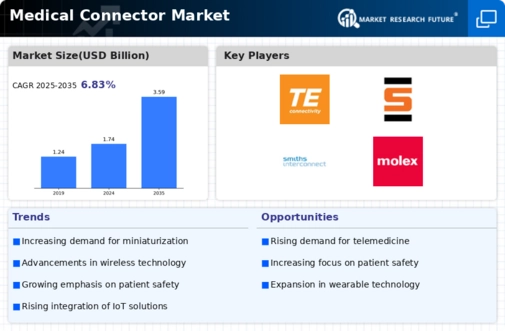

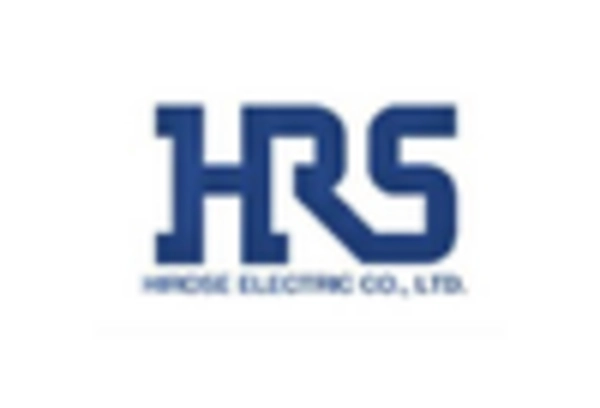
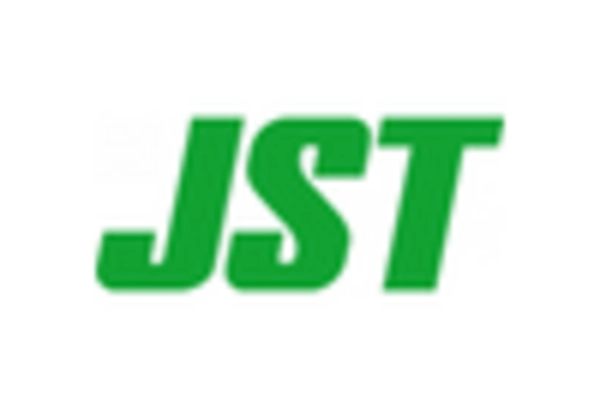
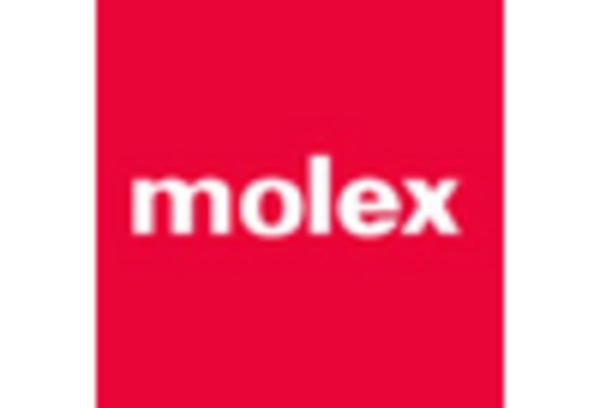

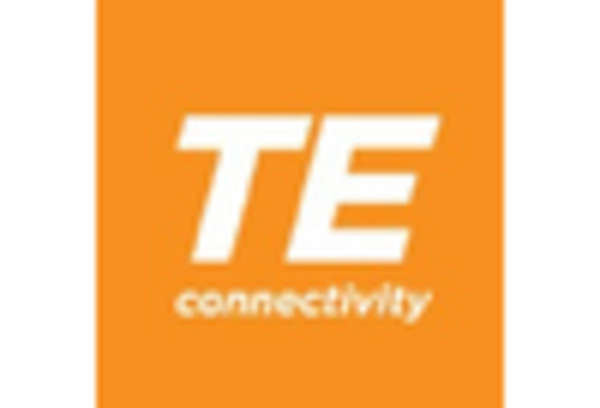

Leave a Comment